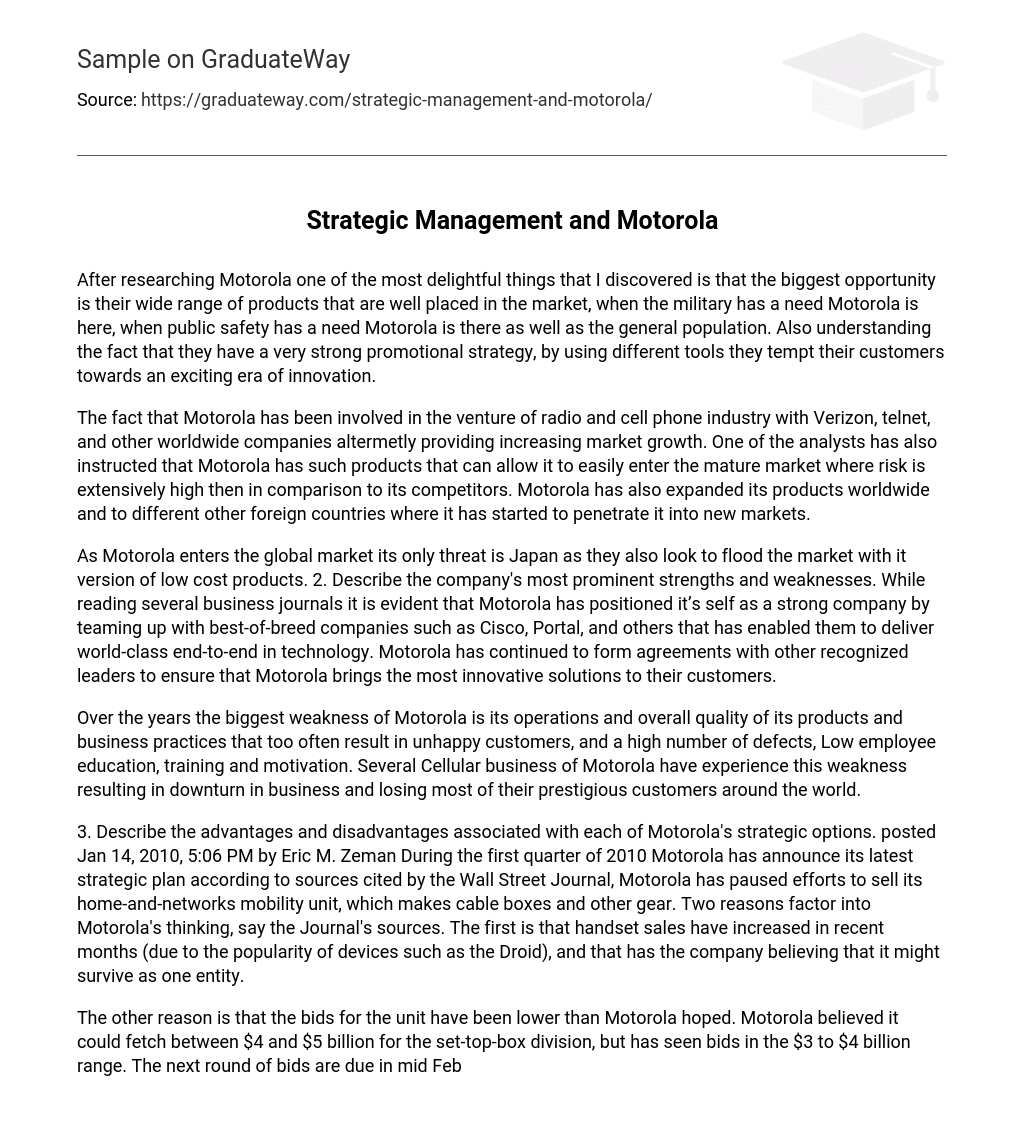One of the most pleasing aspects of researching Motorola is their extensive product range, which caters to various needs in the market. Whether it’s the military, public safety, or the general population, Motorola is there to fulfill their requirements. Additionally, their robust promotional strategy utilizes diverse tools to entice customers into an era of exhilarating innovation.
Motorola has joined forces with Verizon, telnet, and other global companies in the radio and cell phone industry, leading to a steady growth in the market. According to analysts, Motorola possesses products that make it well-equipped to enter high-risk mature markets more easily than its competitors. Additionally, Motorola has expanded its product offerings globally and ventured into new markets in various foreign countries.
Motorola is expanding globally and facing competition from Japan, which is also entering the market with affordable products. Despite this rivalry, Motorola has established itself as a strong company by partnering with top-tier entities like Cisco and Portal. Through these alliances, Motorola can offer advanced technology solutions. Additionally, the company consistently forms partnerships with other industry leaders to ensure they provide cutting-edge solutions to customers.
Over time, Motorola has encountered notable shortcomings in its operations, product quality, and business practices. These weaknesses have resulted in dissatisfied customers, a considerable number of defects, and insufficient employee education, training, and motivation. Numerous cellular businesses within Motorola have been adversely affected by these weaknesses, causing a decline in overall business performance and the loss of esteemed customers globally.
Motorola unveiled its new strategic plan in January 2010, which includes a temporary pause on the sale of its home-and-networks mobility unit. This division is responsible for manufacturing cable boxes and other equipment. The decision was influenced by two key factors: the recent growth in handset sales, driven by popular devices such as the Droid; and the company’s belief that it can thrive as a standalone entity.
Motorola is contemplating selling its set-top-box division for two primary reasons. Firstly, the unit has received bids lower than expected, ranging from $3 to $4 billion instead of the anticipated $4 to $5 billion. The company is uncertain about accepting the upcoming round of bids scheduled for mid-February. Secondly, market research and sales data suggest that it may be an opportune moment to exit the cable box manufacturing business. To align with Motorola’s strategic plan, I propose allocating resources and investing in future products.
Motorola is currently focused on regaining its initial level of profitability. Previous discussions and negotiations have centered around the notion of creating a separate division for its Mobile Devices segment, as it is believed that this would add value. Such a move would offer flexibility in terms of training and improving management expertise in the business.
Motorola had to delay implementing their idea due to the financial crisis, but they are now concentrating on studying customer demand and investigating inventory for new product ideas. They also want to enhance operational efficiency and decrease costs. To refocus their efforts, conducting a SWOT analysis would be beneficial in assessing strengths, weaknesses, opportunities, and threats within the company’s structure. This analysis will determine if any changes are required for a more effective structure. However, Motorola needs to be mindful of potential risks associated with this decision. Ultimately, Motorola must prioritize market needs and customer preferences in order to remain ahead in the rapidly evolving mobile technology industry—particularly in the cell phone sector where they have maintained a strong presence since their inception.
Motorola aims to be the top provider of 4G mobile computer technologies. To achieve this goal, all stakeholders including shareholders, corporate leadership, internal and external customers, manufacturing centers, and sales department need to work together. It is important for Motorola to incorporate 4G technologies in computers as they are the latest and most advanced mobile technology with a large user base. The responsibility for ensuring this lies with Motorola.





